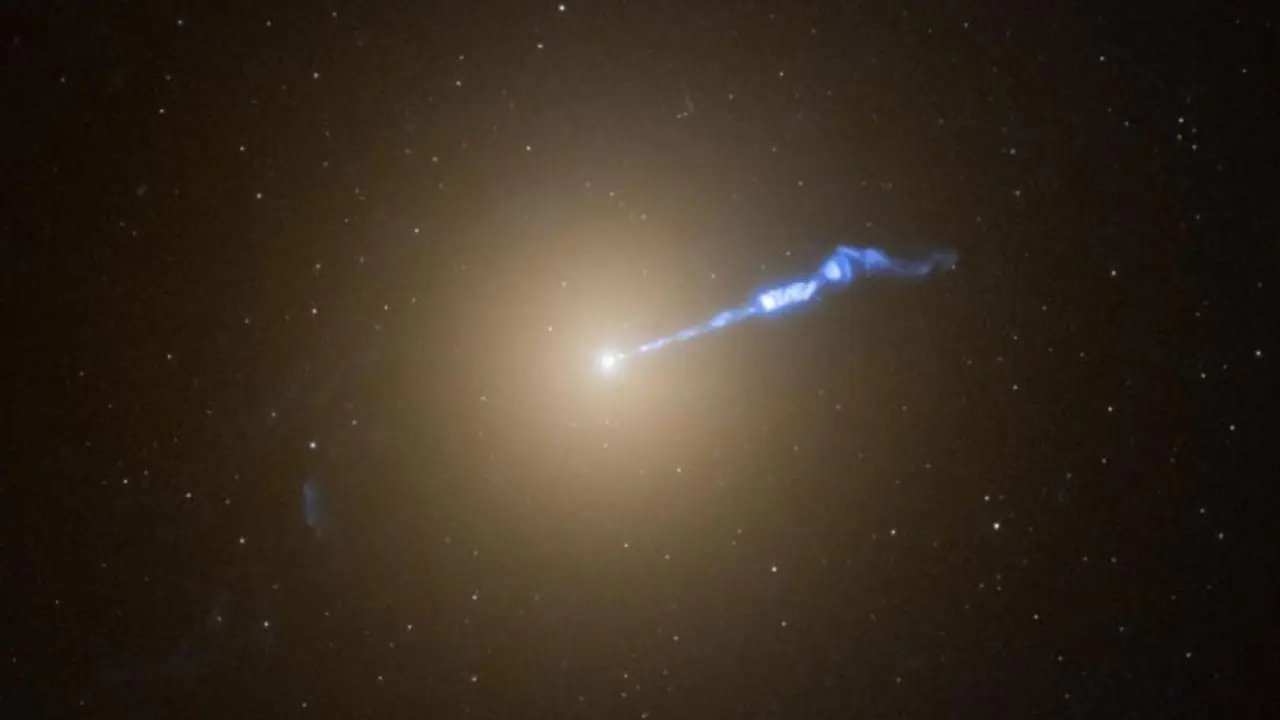
M87 black hole rotates at 80% max speed, nears cosmic speed threshold, feeds at 23% light speed
How did your country report this? Share your view in the comments.
Diverging Reports Breakdown
M87 black hole rotates at 80% max speed, nears cosmic speed threshold, feeds at 23% light speed
The Event Horizon Telescope (EHT) image shows a 3,000-light-year-long jet of plasma blasting from the galaxy’s 6.5-billion-solar-mass central black hole. Scientists now believe it spins at around 80% of the maximum speed nature allows. Its inner accretion disc races at 14% the speed of light, nearly 42 million metres per second. Despite such extreme speeds, the black hole is relatively quiet. It swallows between 0.00004 and 0.4 times the mass of the Sun each year.
Looking into the heart of galaxy M87 feels like staring into a cosmic engine. A black hole, unimaginably large and powerful, sits at its centre, spinning at furious speed. Now, new analysis of the Event Horizon Telescope (EHT) image reveals just how extreme this giant really is.
Spinning close to universal limits
The black hole weighs about 6.5 billion solar masses. Scientists now believe it spins at around 80% of the maximum speed nature allows. Its inner accretion disc races at 14% the speed of light, nearly 42 million metres per second. The spin calculation came from a closer look at the black hole’s “bright spot”—a key feature in the EHT image.
Story continues below Advertisement Remove Ad
This uneven glow is due to a phenomenon known as relativistic Doppler beaming. As material circles the black hole, matter on the near side moves toward Earth. That side appears brighter because of its speed, while the far side dims. The contrast allowed researchers to measure rotation more precisely.
Feeding patterns and jet power aligned
The team also analysed the black hole’s magnetic fields. These swirling patterns showed how matter spirals inward. From this, scientists calculated that material falls into the black hole at roughly 70 million metres per second—about 23% of the speed of light.
Despite such extreme speeds, the black hole is relatively quiet. It swallows between 0.00004 and 0.4 times the mass of the Sun each year. This is far below the Eddington limit, which marks a black hole’s most active feeding phase.
Crucially, the energy released during this process matches the force behind M87’s famous jet. This stream of particles stretches thousands of light-years and shoots out at near light speed. The alignment between feeding energy and jet power supports long-standing theories about jet formation in active galactic nuclei.
Black hole remains key to cosmic mysteries
This fresh estimate of the black hole’s spin—between 0.8 and 0.998—offers more clarity than ever before. Earlier guesses had placed the figure anywhere from 0.1 to near-maximum.
As astronomers refine their tools, M87’s black hole continues to be a valuable testbed. Each new image and measurement sharpens our view of how these giants evolve, influence galaxies and shape the broader universe. The Event Horizon Telescope is just the beginning.
